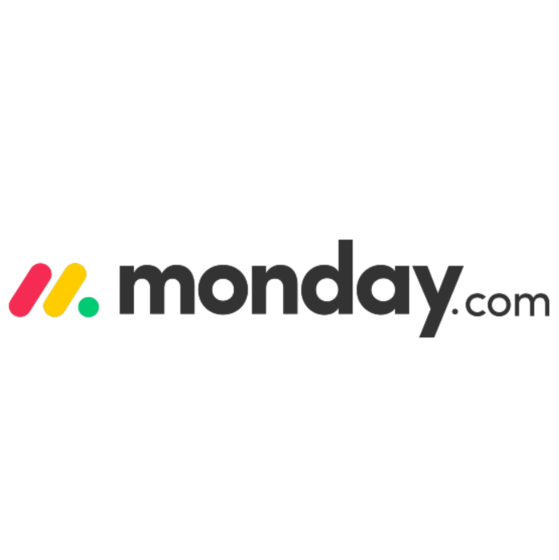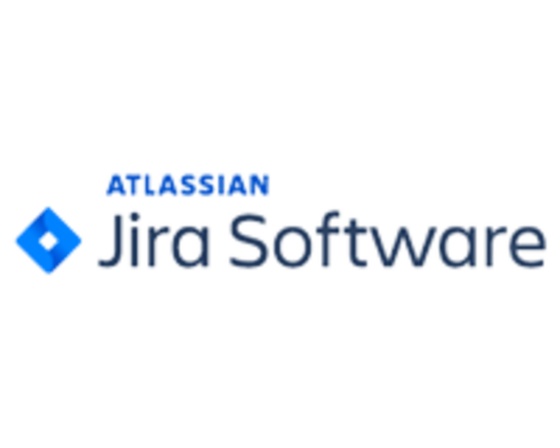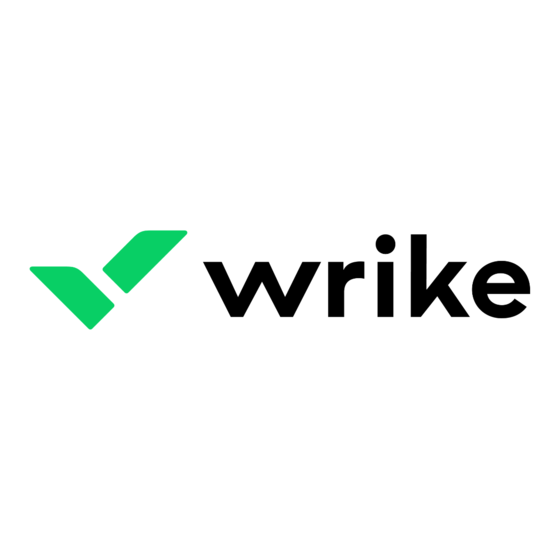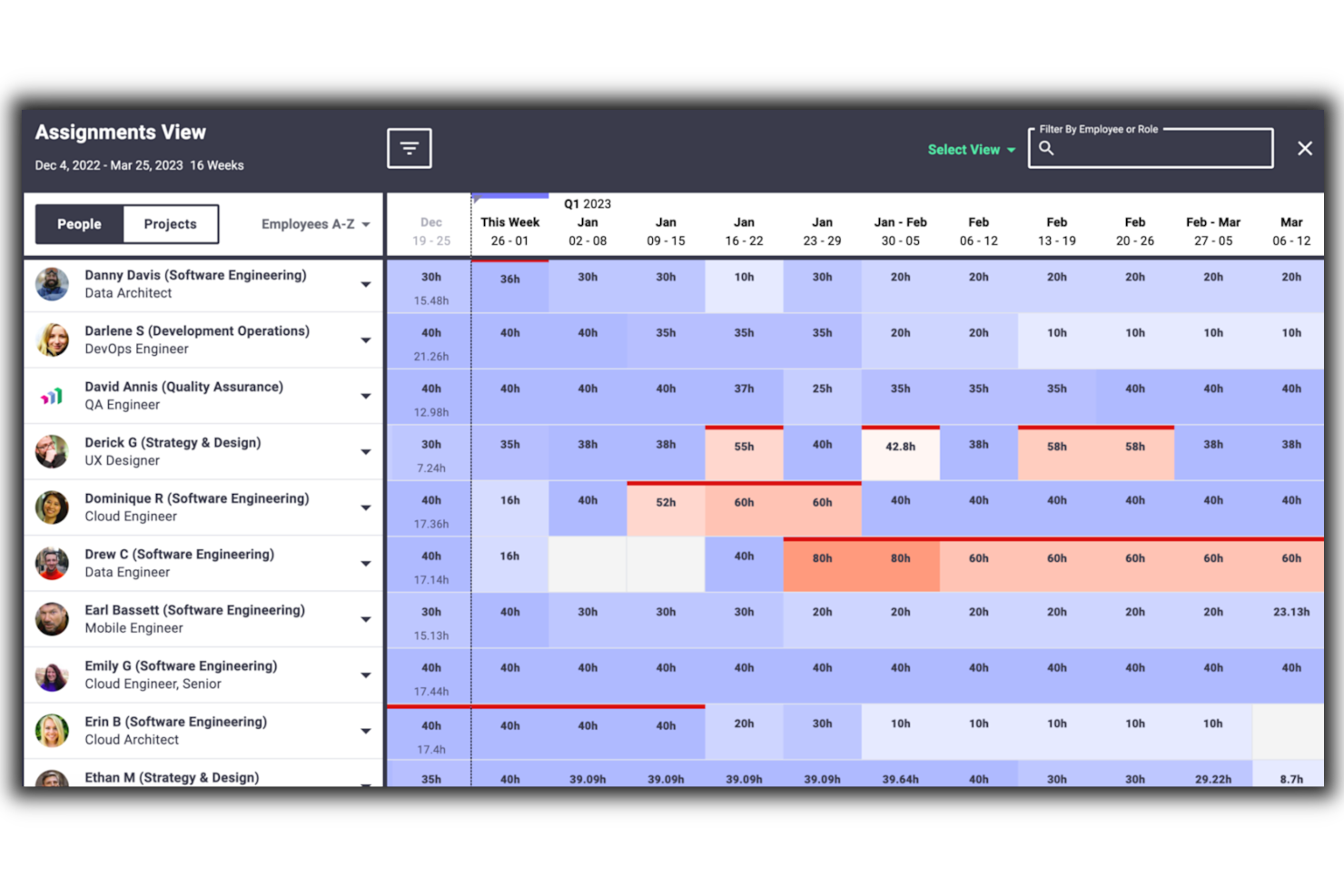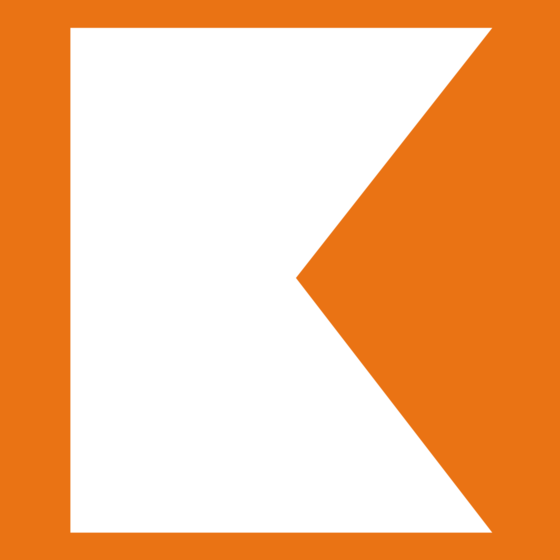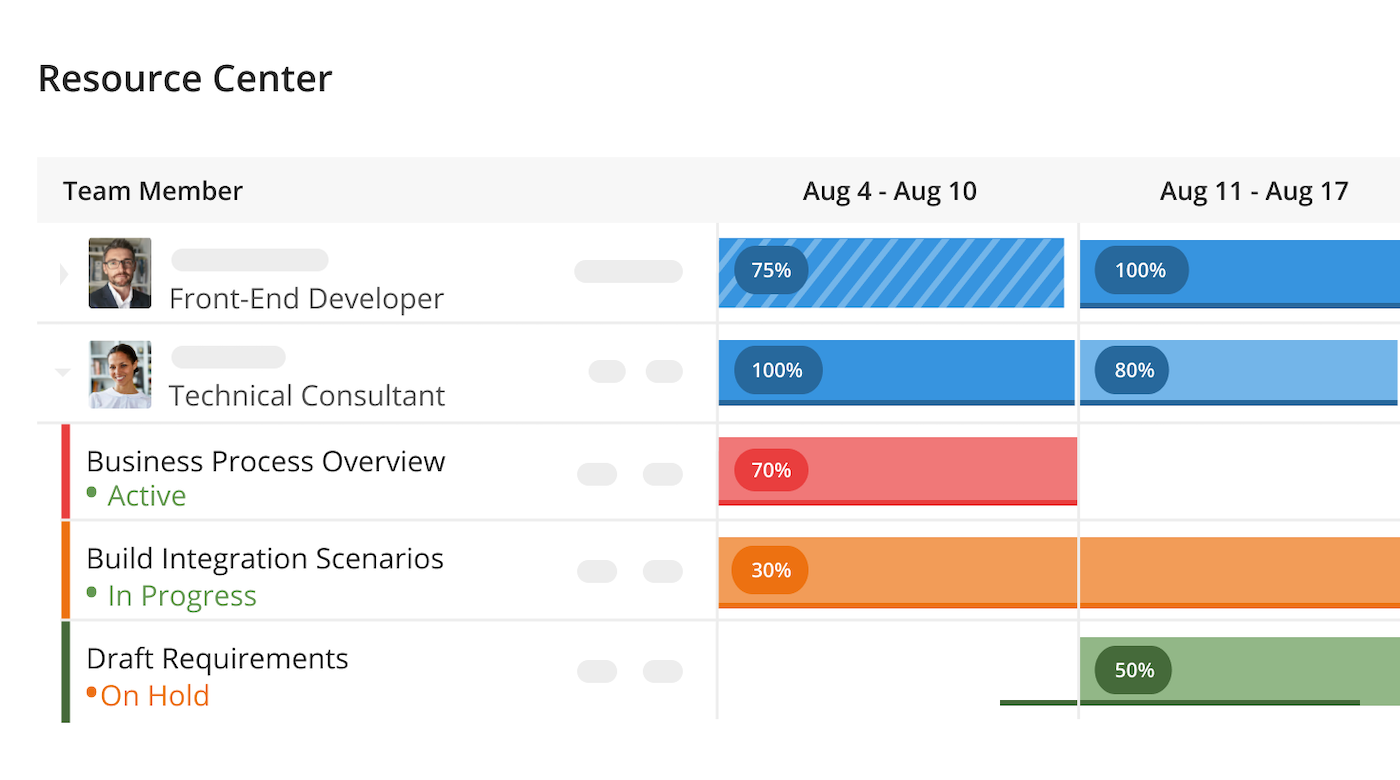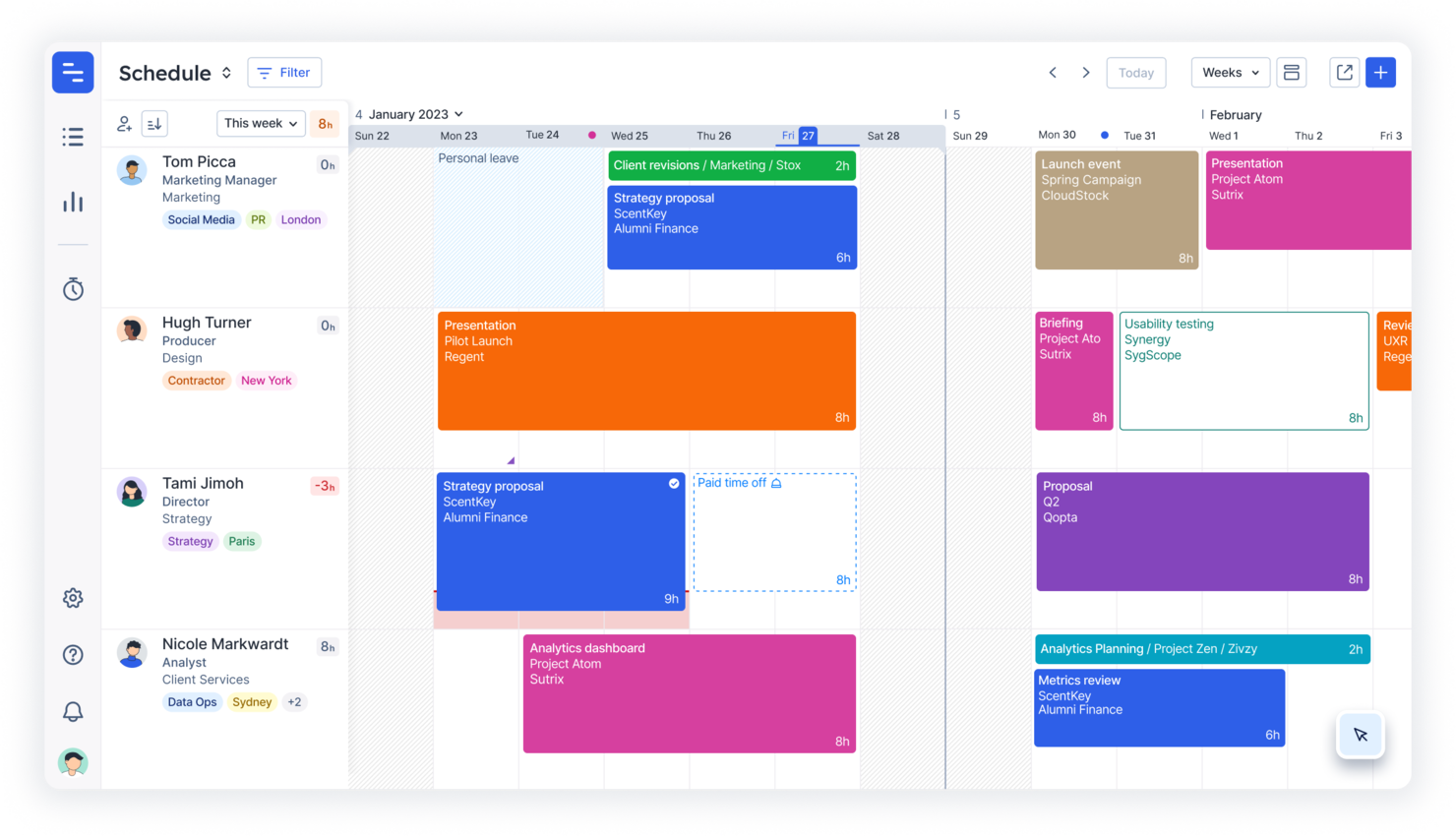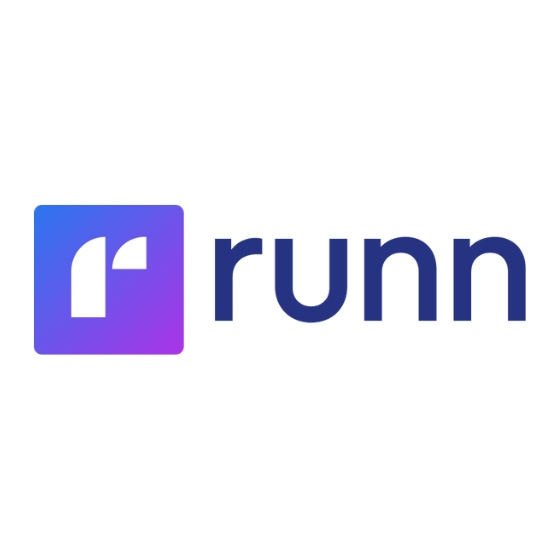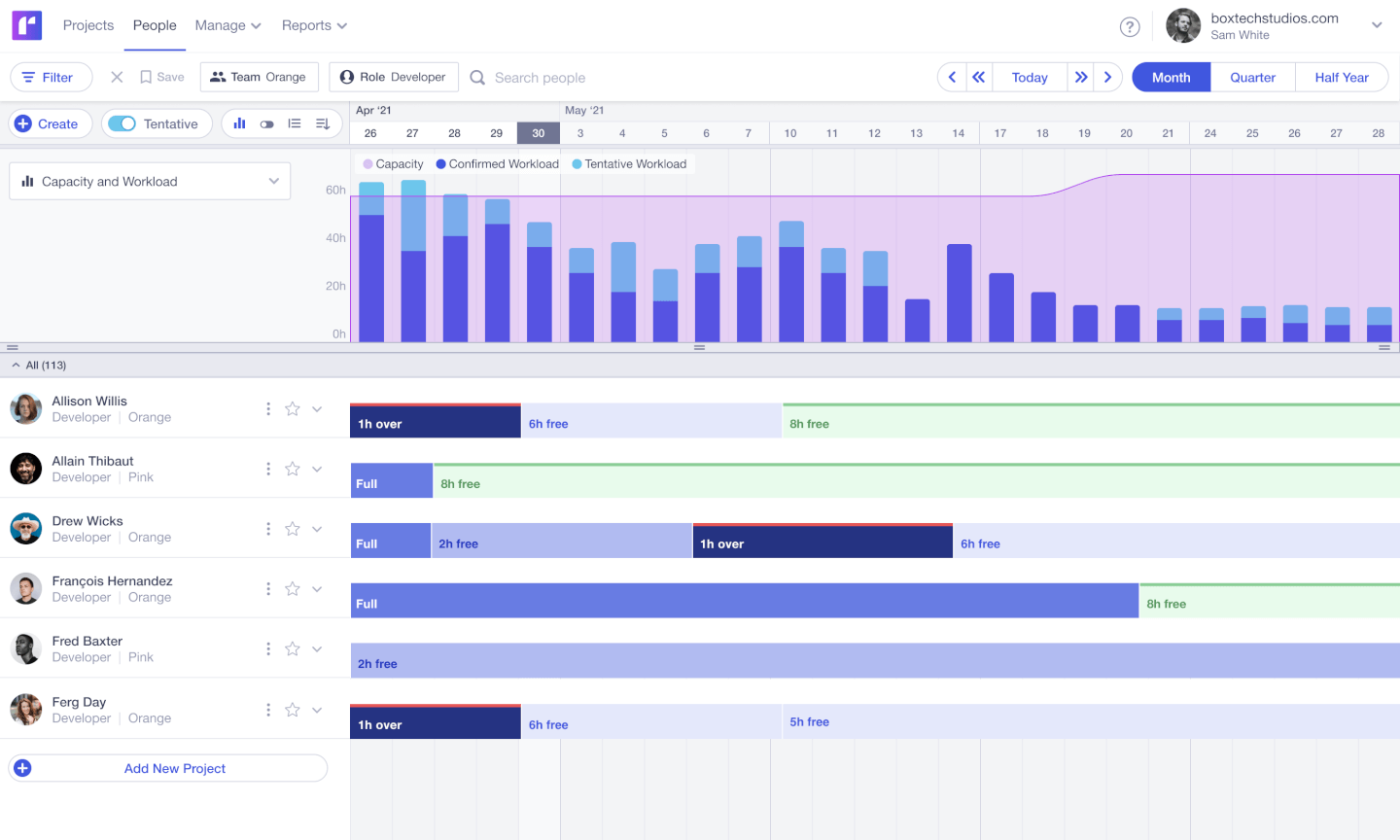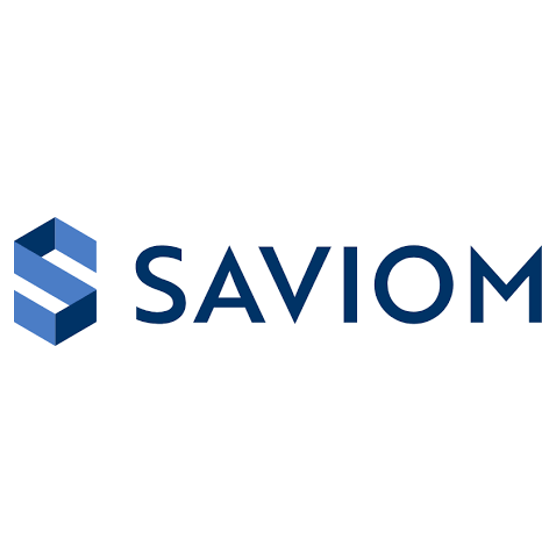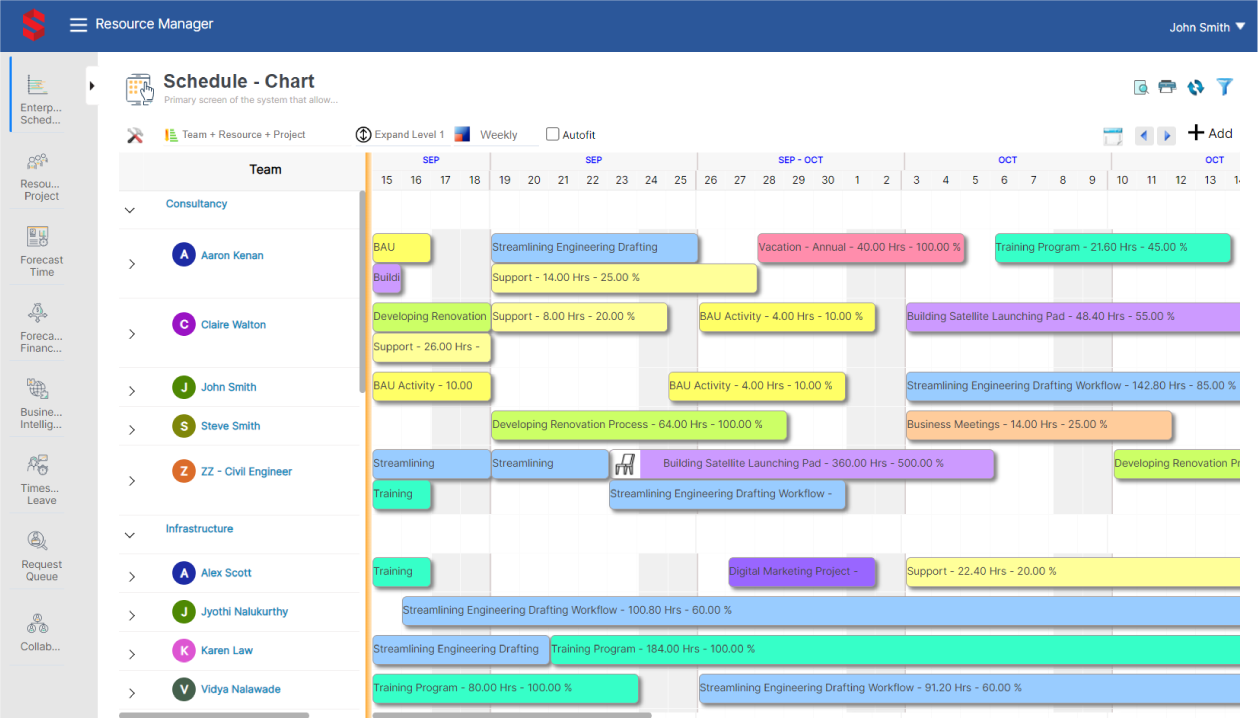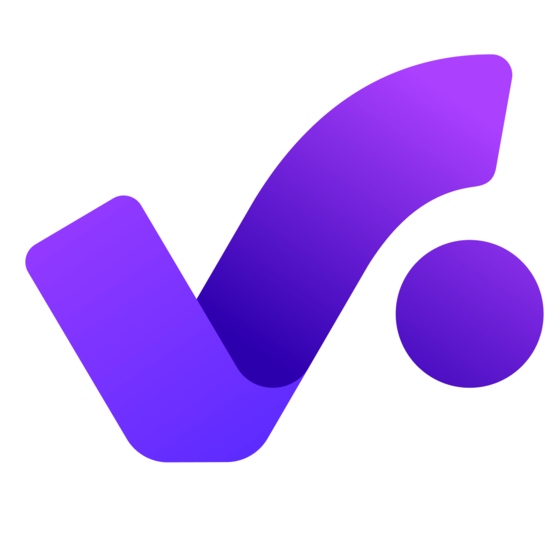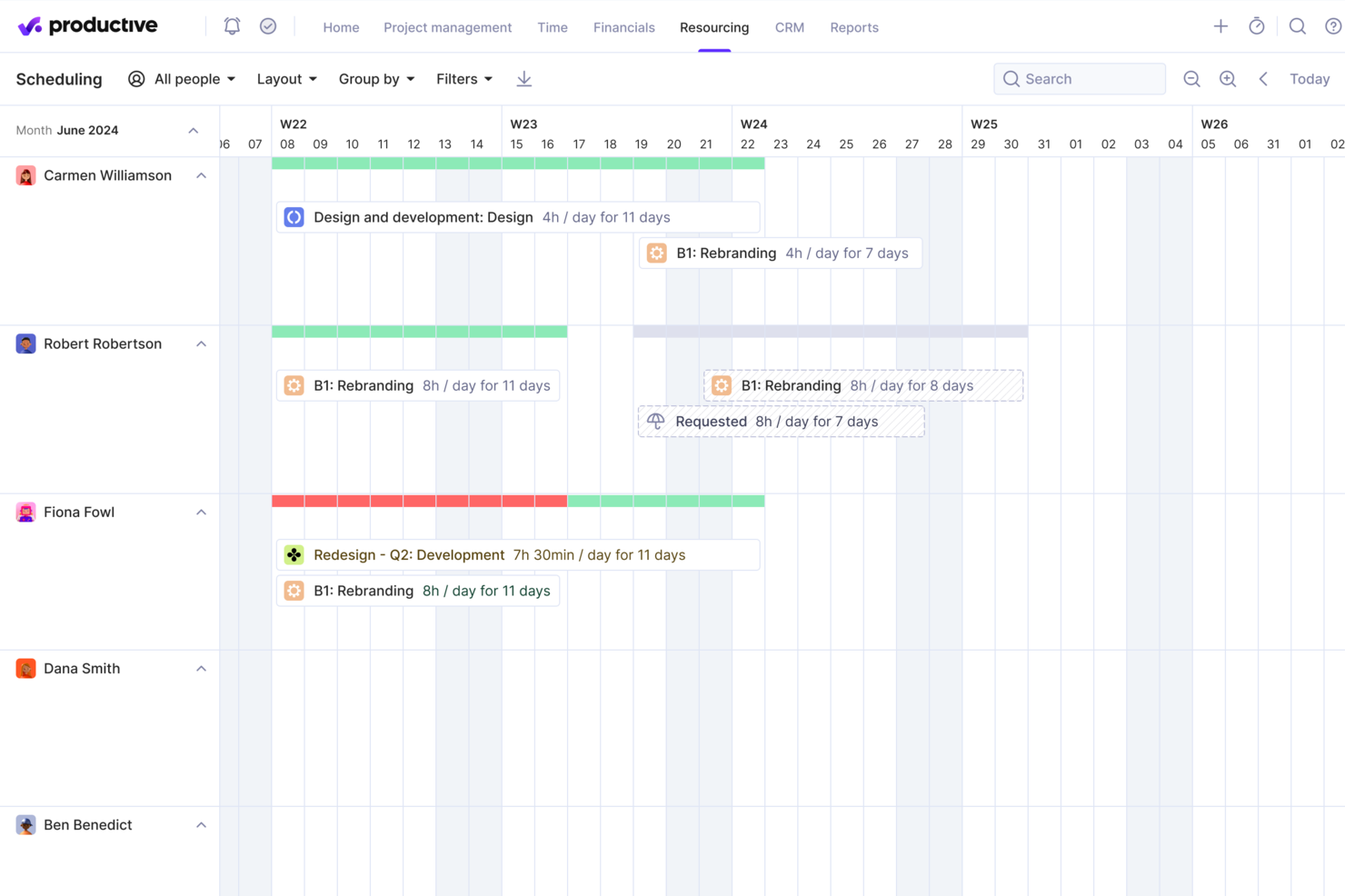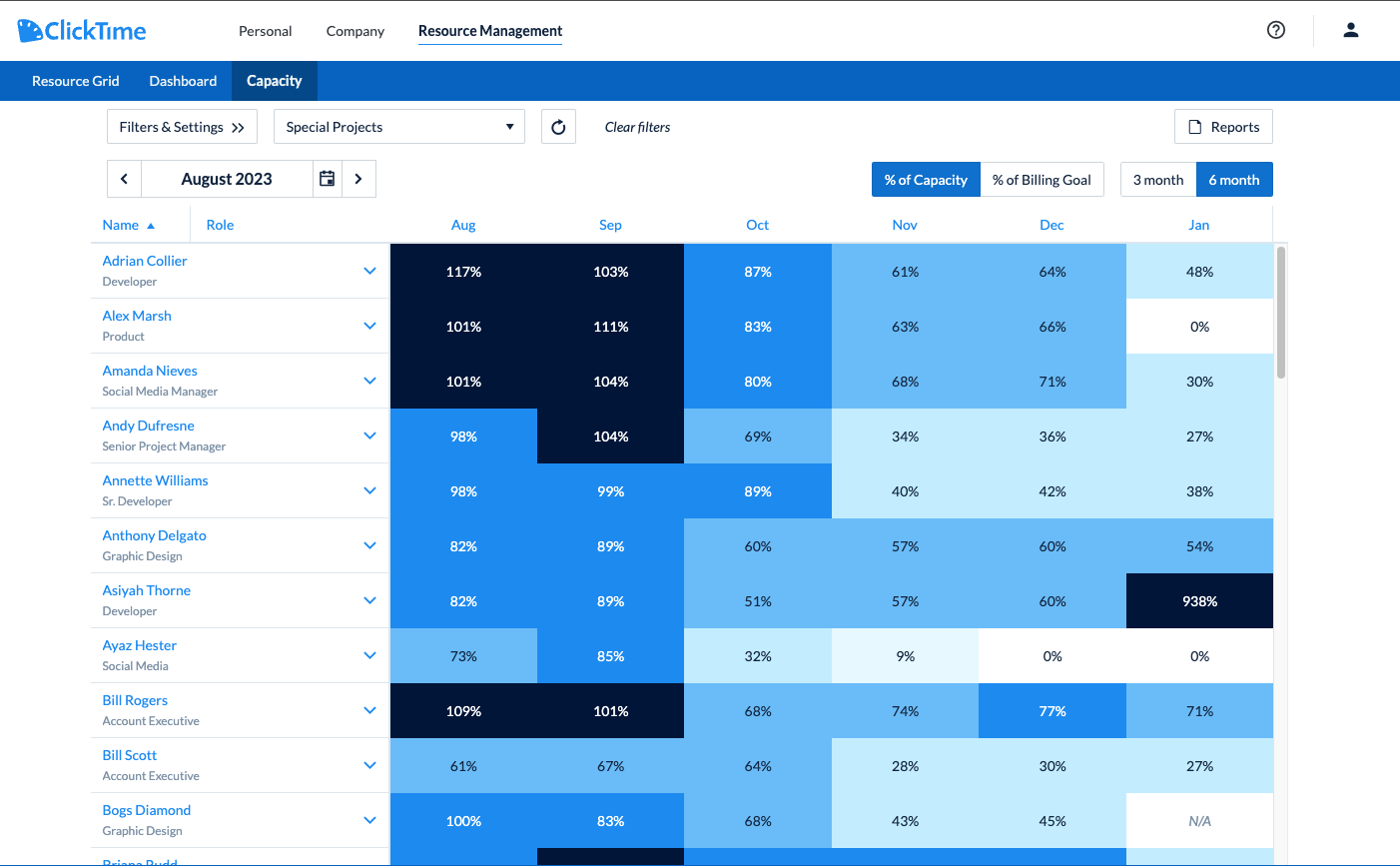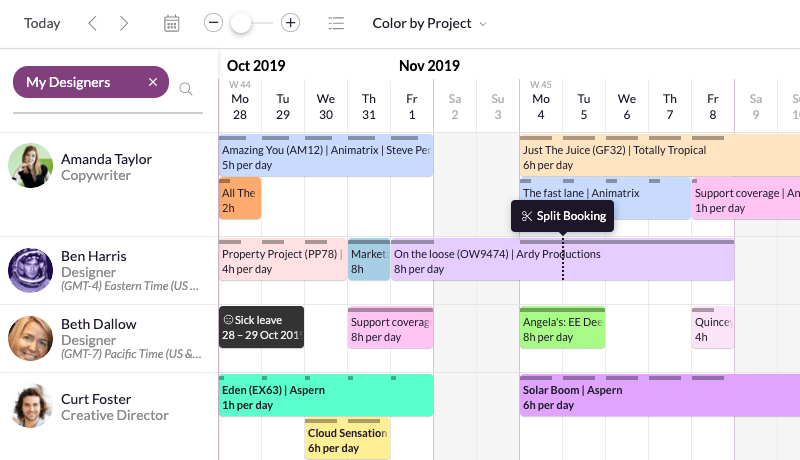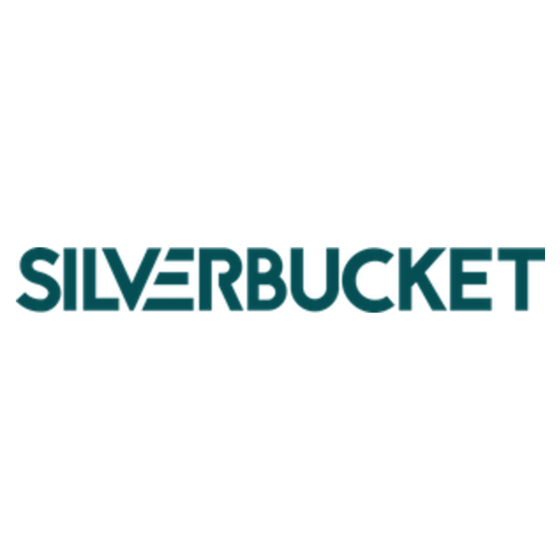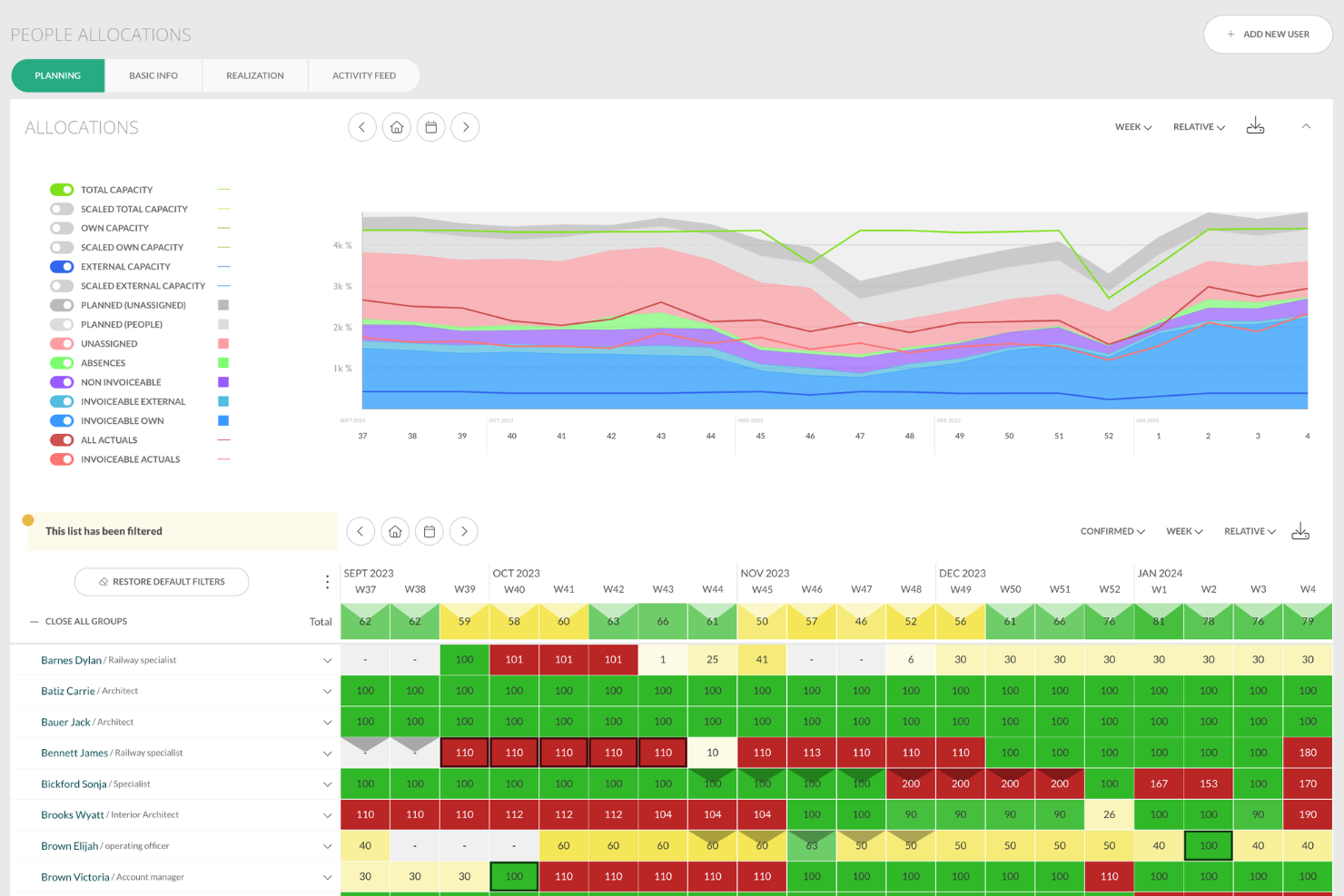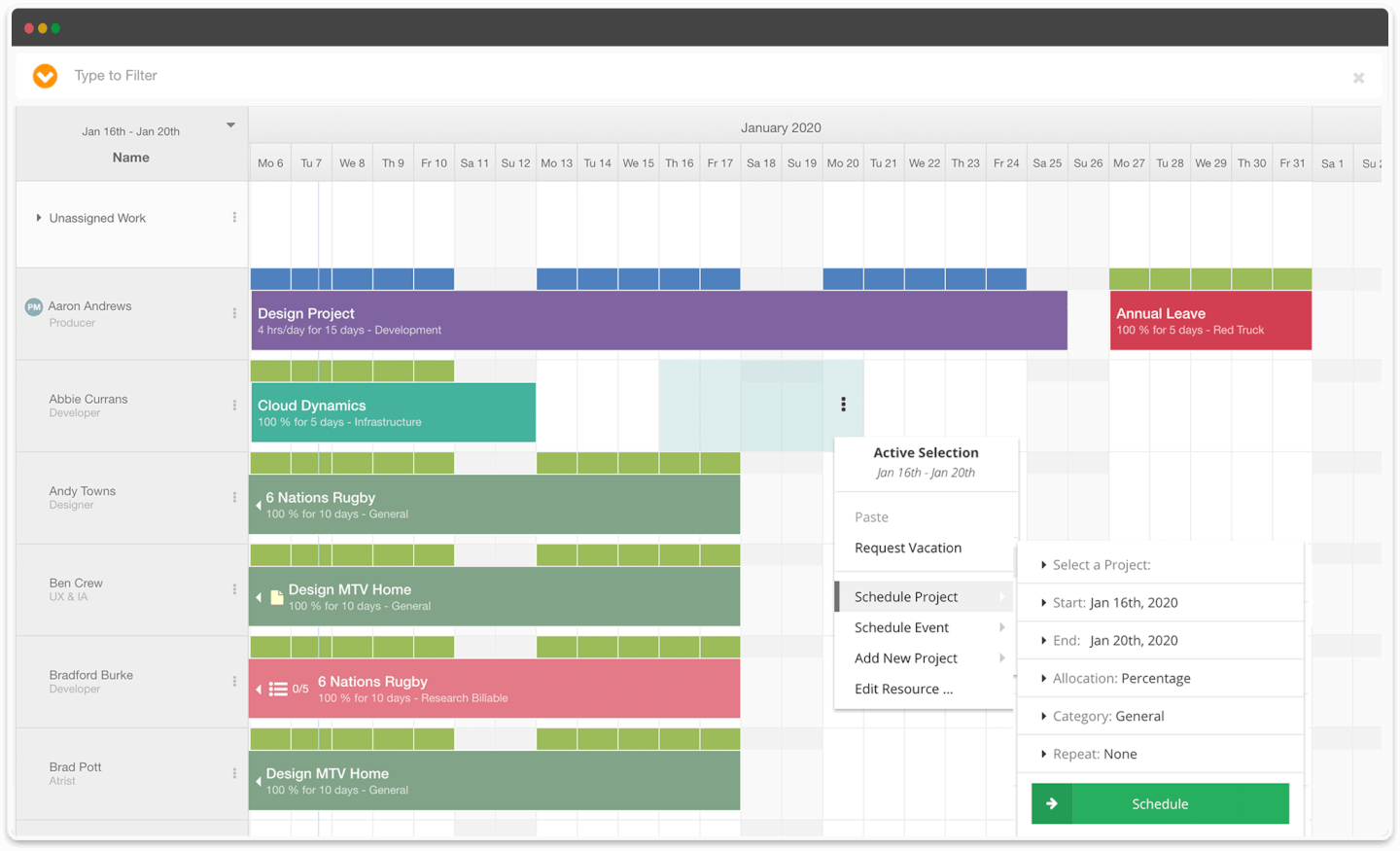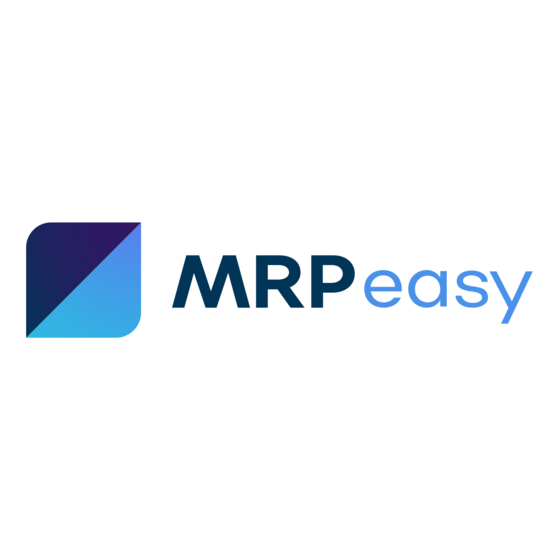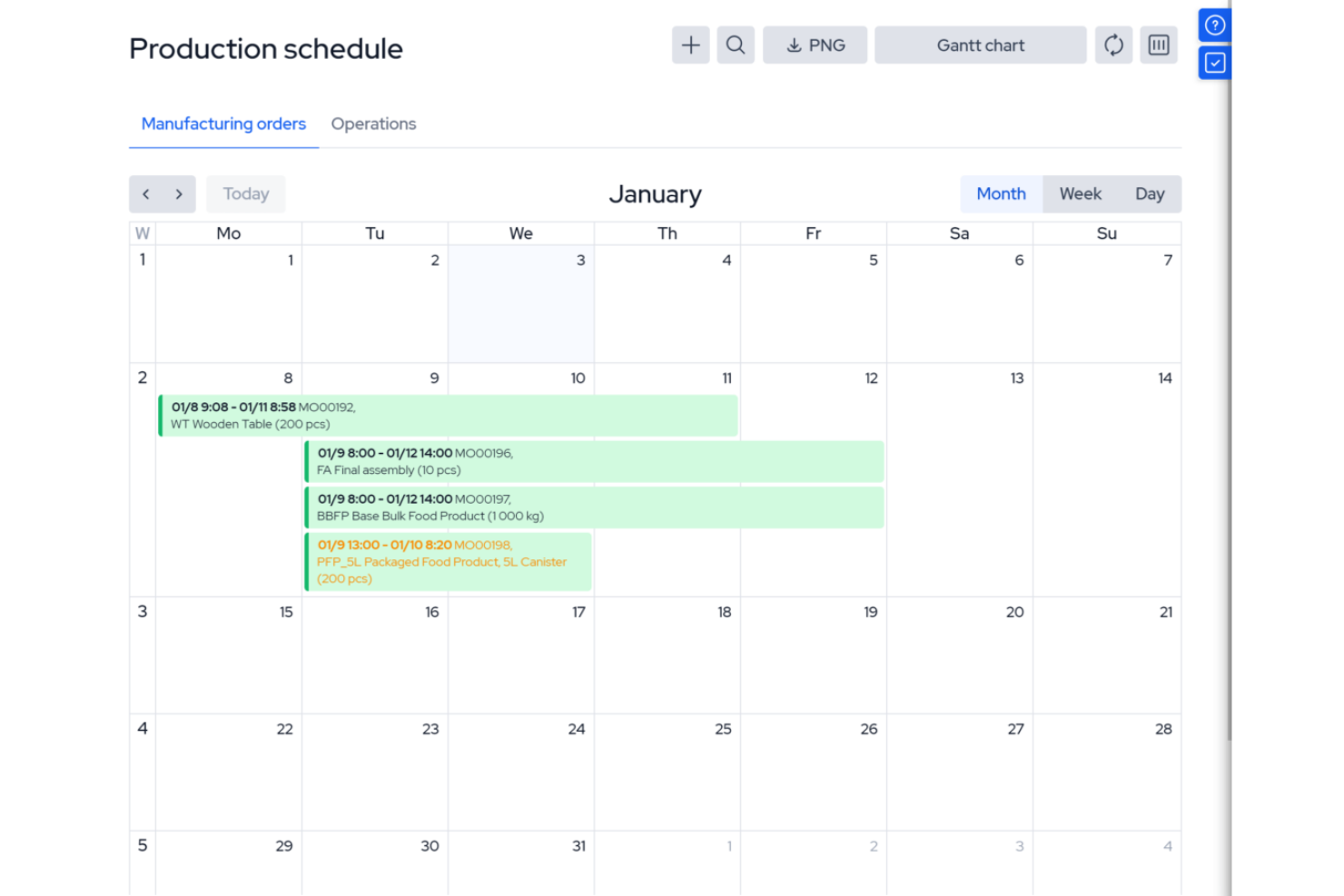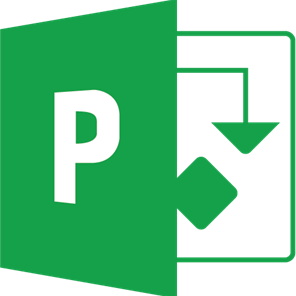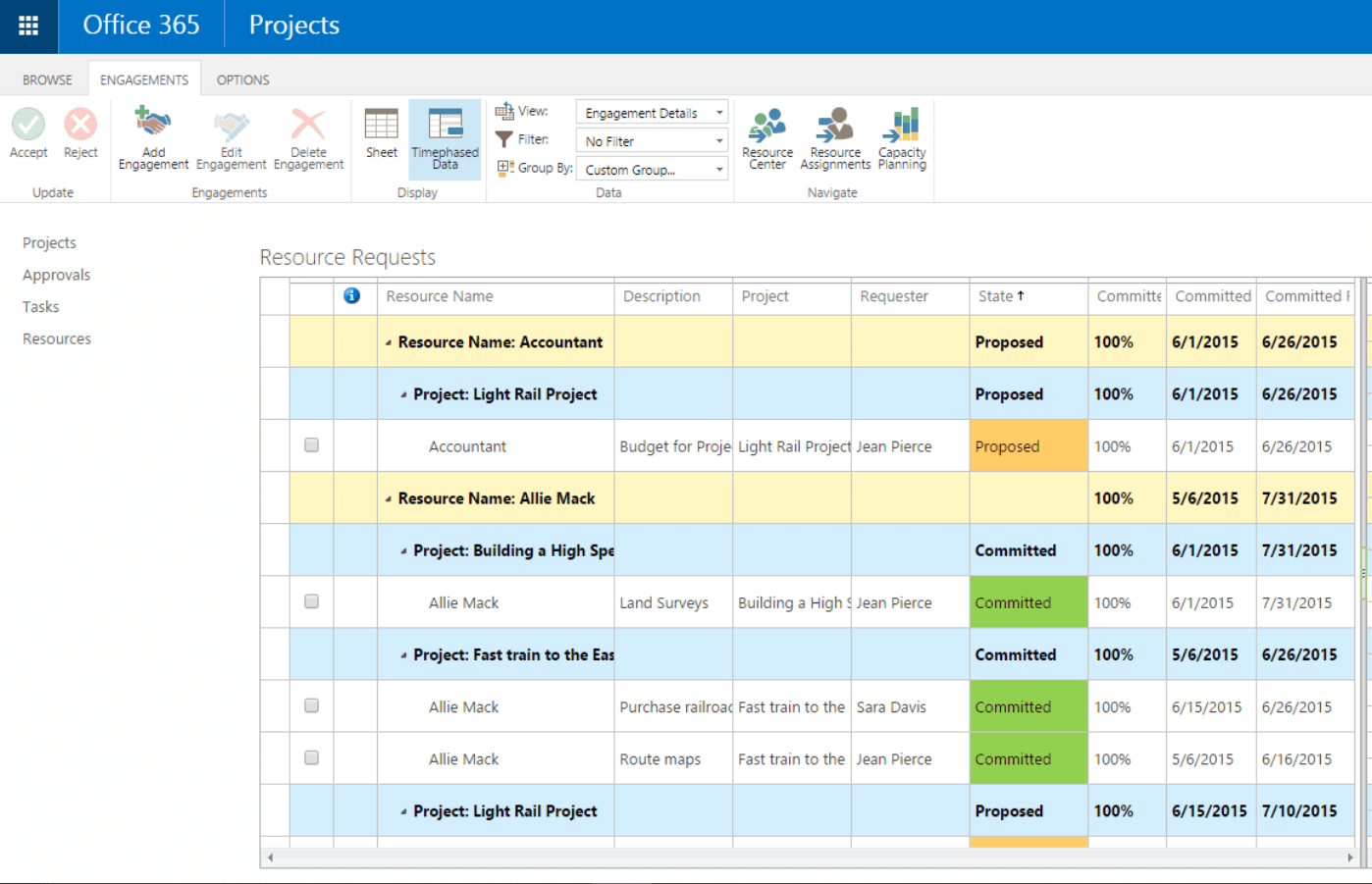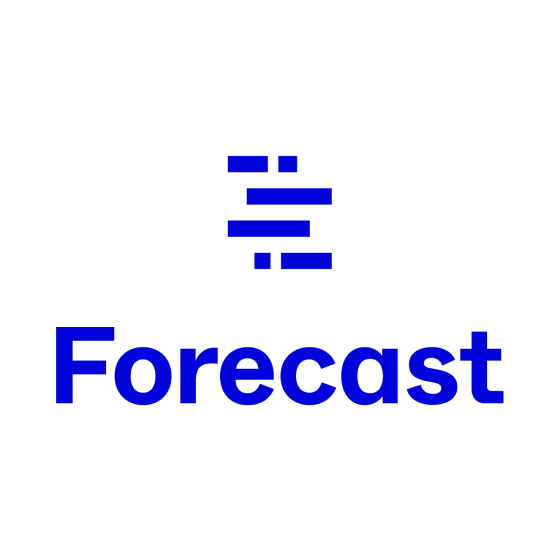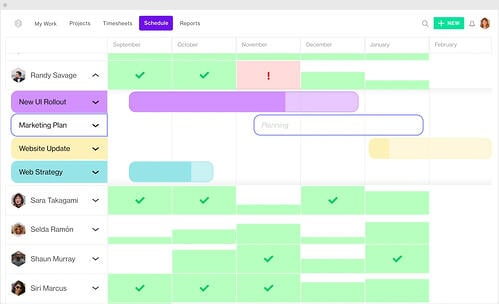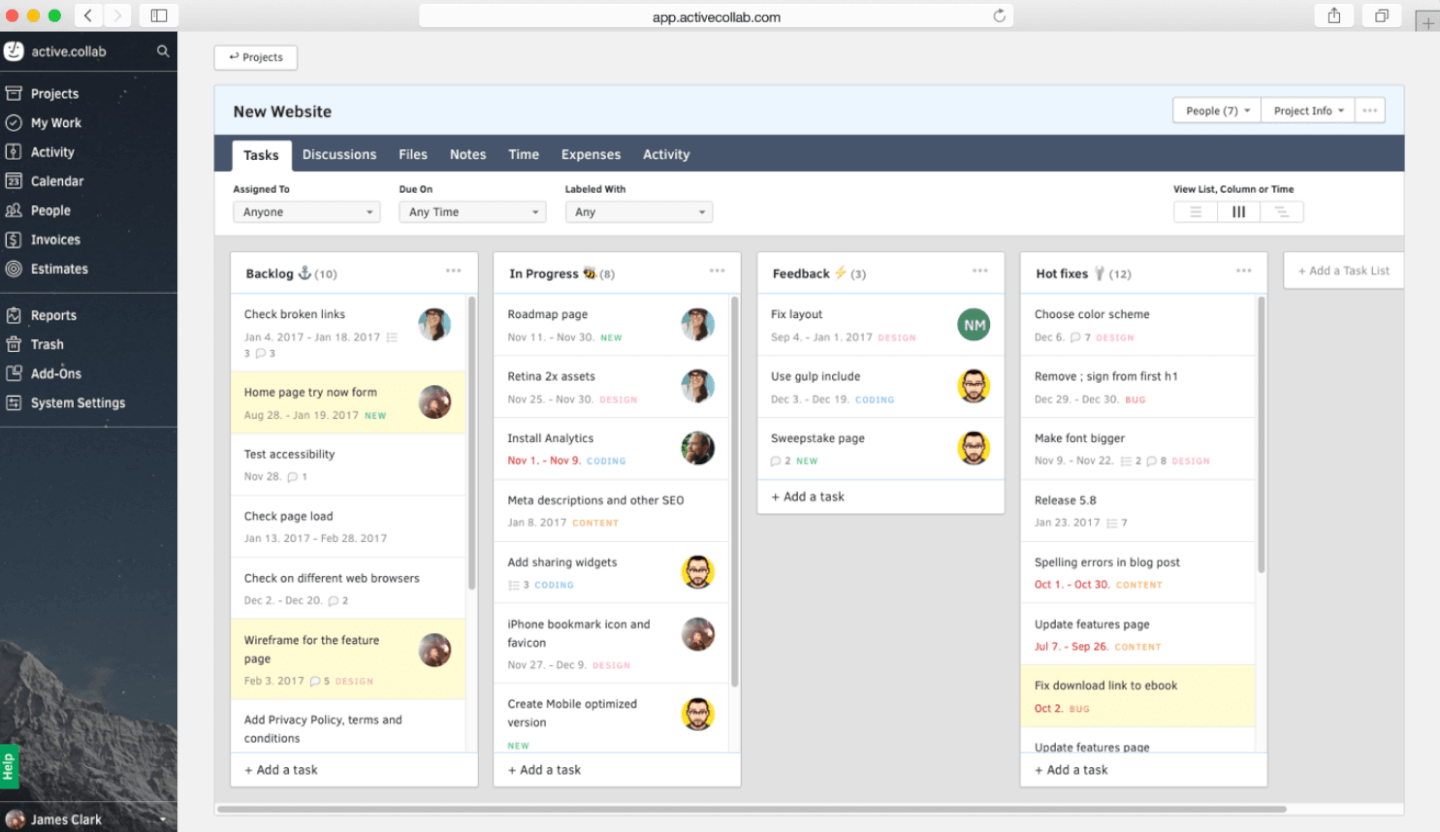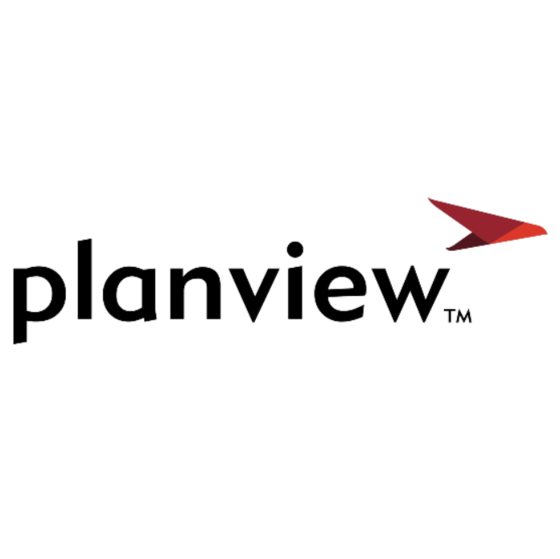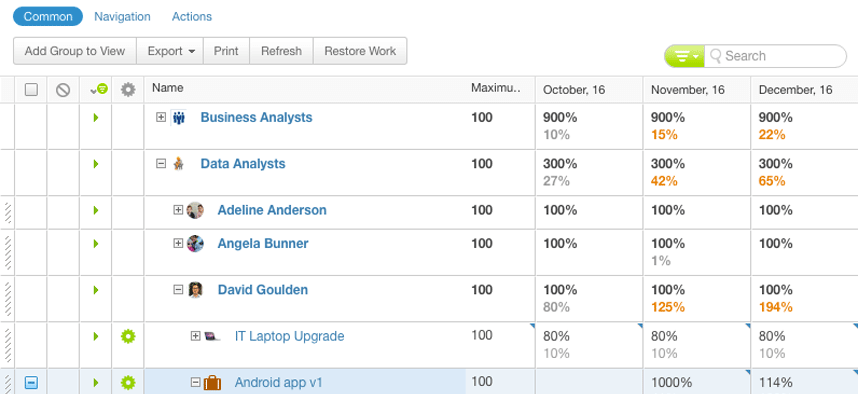15 Una Lista del Mejor Software de Programación de Recursos
Here's my pick of the 15 best software from the 26 tools reviewed.
Conceptos Básicos Sobre la Programación de Recursos
¿Qué es la programación de recursos?
La programación de recursos es un paso clave en la gestión de proyectos. Es el proceso y los métodos utilizados para asignar los recursos de una organización a proyectos o tareas de acuerdo con la disponibilidad de recursos. Implica enumerar tareas, estimar su duración, identificar restricciones, establecer fechas límite, identificar la demanda de recursos, pronosticar la disponibilidad futura de los recursos, identificar posibles obstáculos en los recursos y utilizar toda esta información para hacer coincidir los recursos apropiados con tareas o trabajos.
¿Qué implica la programación de recursos?
La programación de recursos generalmente implica un conjunto de herramientas que ayudan a asignar, programar y agregar recursos. Normalmente, la gente piensa en un diagrama de Gantt, pero los administradores de recursos y los gerentes de proyectos usan varias herramientas para programar recursos, incluidos calendarios, líneas de tiempo e histogramas con datos de recursos agregados.
¿Qué es el software de programación de recursos?
El software de programación de recursos puede ayudar a planificar, organizar y administrar sus proyectos, así como los recursos de tu agencia, ya sean personas, salas, o líneas telefónicas. Se pueden utilizar para desarrollar planes de recursos y crear pronósticos de requerimientos de recursos. Dependiendo de la sofisticación del software, también pueden incluir herramientas para la estimación y la planificación, la programación, el control de costos y la administración del presupuesto, la asignación de recursos y el almacenamiento de documentos.
El software de programación de recursos también es conocido por otros nombres: si escuchas a las personas hablar sobre el software de programación de recursos, el software de asignación de recursos, las herramientas de asignación de recursos o las herramientas de administración de la carga de trabajo, todos están hablando de lo mismo: todo es sobre planificación efectiva de recursos y herramientas para ayudarte a hacer un mejor trabajo.
El problema con el software del programador de recursos es que a menudo hay mucha superposición con otras funciones empresariales. El software de gestión de recursos, el control del tiempo, la comunicación del proyecto, los gastos, el almacenamiento, la automatización de los servicios profesionales (PSA) y el software de planificación de los recursos de los servicios (SRP) se pueden encontrar juntos, esto puede ser bueno, pero si necesita integrar o reemplazar el viejo sistema, las cosas pueden empezar a complicarse.
¿Cuáles son los beneficios del software de programación de recursos?
Estos son algunos de los principales beneficios del software de programación de recursos:
- Ahorras tiempo moviendo recursos manualmente
- Cometes menos errores al reservar tu equipo.
- Obtienes una comprensión clara de la capacidad y utilización del equipo
- Despliegas los recursos limitados que tienes de manera más efectiva y eficiente
A medida que las agencias y los estudios crecen, los sistemas para la programación de recursos que pueden haber funcionado para una agencia pequeña a menudo tienen dificultades para escalar. Excel y Google Docs son efectivamente herramientas gratuitas de programación de recursos, pero el software de programación de recursos puede ayudarte a trabajar más rápido, de manera más inteligente, y ayudarte a asignar personas a proyectos, y permitirte programar proyectos de manera más efectiva. Si aún buscas una herramienta de programación de recursos gratuita, te recomiendo que utilices Google Sheets o Excel, pero hacer la inversión en una herramienta adecuada valdrá la pena.
¿Qué son los recursos?
En una organización, los recursos pueden incluir cualquier cosa que contribuya al producto terminado: personas (recursos humanos y habilidades), recursos financieros, inventario, equipos y suministros, espacio como oficinas y salas de reuniones, recursos de TI y recursos de producción y naturales, entre otros.
¿Acabas de darte cuenta de que no buscas un software de administración de recursos? Echa un vistazo a otras herramientas útiles:
- Software de programación de proyectos para ayudarte a planificar, controlar y analizar sus proyectos.
- Software de administración de recursos para ayudarte a administrar los recursos de la organización.
Si buscas un software de programación de recursos, en esta publicación encontrarás una comparación rápida, simple y fácil de leer sobre las diez herramientas de programación de recursos más importantes en el mercado de 2024.
Compara y Evalúa Rápidamente el Mejor Software de Programación de Recursos
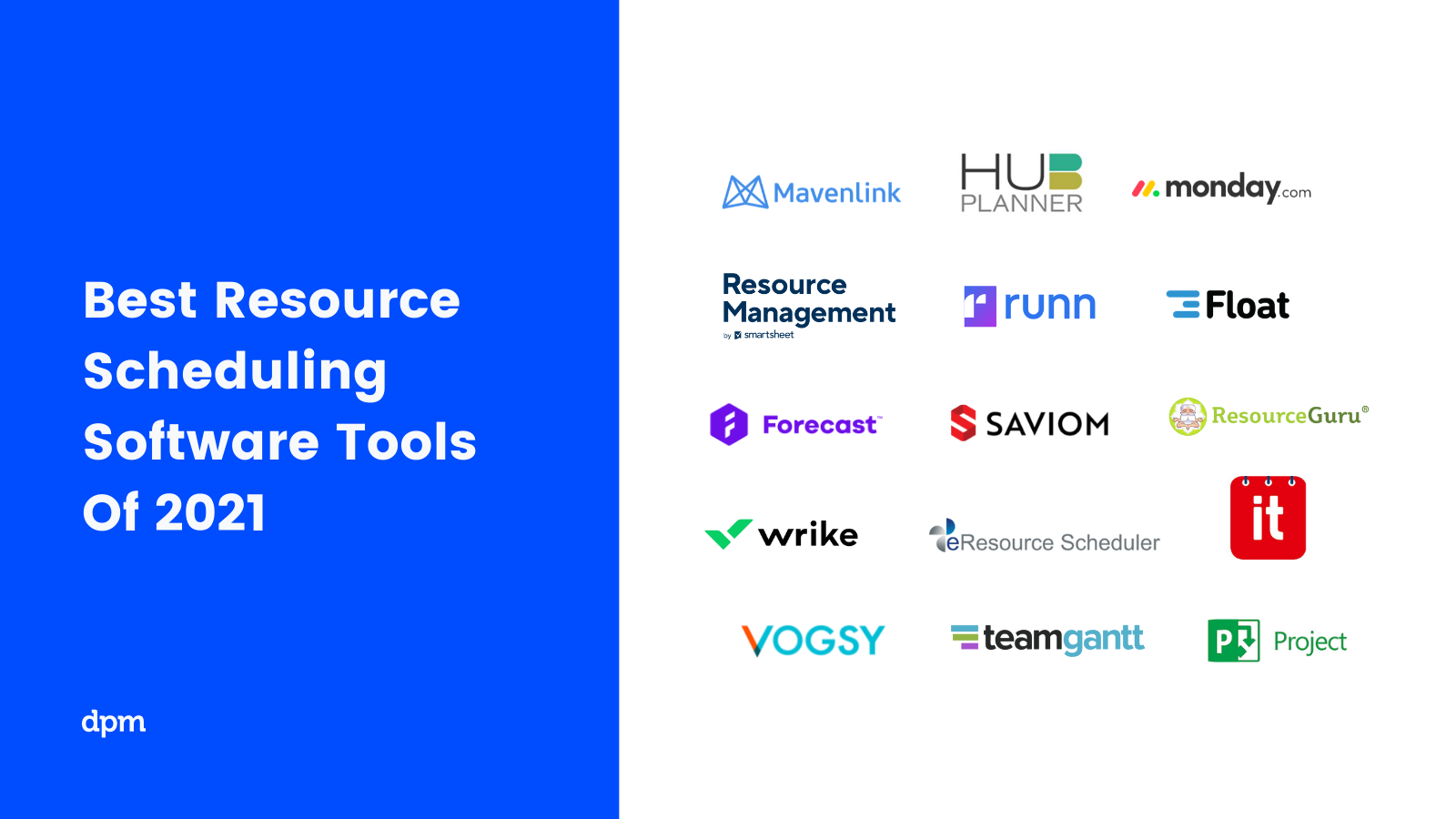
The Digital Project Manager es financiado por sus lectores. Cuando haces clic en los enlaces de nuestro sitio, podríamos ganar una comisión. Más información.
En esta publicación, también ayudaremos a explicar qué es el software de programación de recursos, cómo te ayudará a administrar y asignar y programar mejor tu equipo y recursos, y te brindará un resumen de sus funciones para que puedas comparar y encontrar fácilmente las herramientas de programación de recursos del proyecto y del equipo que mejor se ajustan a ti.
Video: Cómo Elegir El Mejor Software De Programatión De Recursos
¿Te preguntas qué buscar mientras revisas las opciones del software de programatión de recursos? Aquí hay un video que cubre nuestros criterios y te da una idea de cómo se ven las interfaces de varias herramientas.

Criterios Comparativos del Software de Gestión de Recursos
Para aparecer en esta lista de software de gestión de recursos, se evaluaron las herramientas en función de los siguientes criterios:
- Interfaz de usuario (UI): ¿qué tan bien diseñada está? ¿Ofrece vistas claras y navegación intuitiva?
- Usabilidad: ¿Es fácil de aprender y dominar? ¿Hay tutoriales y capacitación? ¿La empresa ofrece buena tecnología y soporte al usuario?
- Características y funcionalidad: ¿Cuántas de las características y funciones clave del software de administración de recursos ofrece y qué tan potentes son? Específicamente, busqué:
- Automatización: las funciones de programación automática son una razón importante para usar el software de programación de recursos. Como mínimo, esto significa que tus tareas se ajustarán automáticamente cuando se muevan, según las dependencias que hayas establecido. También puedes incluir flujos de trabajo personalizados con automatización para ayudar a optimizar los procesos repetitivos.
- Programación en tiempo real: las mejores herramientas de recursos brindan visibilidad en tiempo real de las cargas de trabajo y permiten monitorear el progreso, ver la utilización de recursos y hacer ajustes en tiempo real.
- Alertas: un buen programador de recursos permite personalizar el tipo de notificaciones y alertas que recibe cada usuario (correo electrónico, escritorio, etc.), asegurando que las alertas sobre la utilización de recursos y la carga de trabajo mantengan actualizadas a las personas correctas.
- Integraciones: ¿Es fácil conectarse con otras herramientas? ¿Hay integraciones por defecto?
- Relación calidad-precio: ¿Qué tan apropiado es el precio según sus características, capacidades y usos? ¿La fijación de precios es clara, transparente y flexible?
Descripciones Generales de las 15 Mejores Herramientas de Programación de Recursos
Esta reseña cubre en detalle las herramientas de de optimización de la programación de recursos mencionadas anteriormente con detalle, seguidas de una lista de herramientas adicionales de planificación y programación de recursos para que consultar.
Parallax is a cloud-based resource management and planning software that allows organizations to track resources including people, equipment, and tasks. The software uses automation to simplify scheduling and resource allocation across a large number of projects.
Why I picked Parallax: This tool uses algorithms to optimize the scheduling process, taking factors like cost-effectiveness, availability, capacity, and deadlines into account. These algorithms help maximize efficiency and minimize costs by allocating the most appropriate resources to tasks and projects. The platform also allows for customization to make sure it suits the realities and needs of the user.
For studio and agency environments, this software is particularly beneficial. The analytics tools gather insights on resource usage over time, and offer predictive insights to help businesses anticipate future resource demand based on past trends. For fast-paced, high-volume use cases, the algorithmic functions of the platform can support efficiency and reduce redundancy.
Parallex Standout Features & Integrations
Features include billable capacity tracking, resource forecasting, project health tracking, and cross-team visibility.
Integrations include Asana, Harvest, Hubspot, Jira, Microsoft Teams, Oracle NetSuite, Salesforce, and Tempo.
Pros and cons
Pros:
- Automation features help increase efficiency over time
- Friendly user interface makes the tool easy to use
- Support team readily available to help with onboarding and troubleshooting
Cons:
- The software is relatively new and is regularly updated for improved usability
- Data needs to be collected before predictive insights become reliable
Kantata is a well-rounded resource management & PSA software that bridges the core planning, execution, project accounting, and analysis systems in a single operating environment.
Why I picked Kantata: It has modules for project management, accounting, resource management, business intelligence, and team collaboration. On top of this, it offers a system of dashboards, live time and expense tracking features, and a great documenting system.
Besides the resource scheduling-specific features shown below, Kantata offers a ton of other tools for managing a business beyond resource scheduling, including built-in BI reports, trend analysis, data visualization, data integration with other systems, project costing, invoicing, and much more.
What’s more, the company leverages its professional services expertise as part of their offering, making available their Kantata BI Consultants who can build reports specifically for your business. As well, they provide some great training resources that can help mitigate the risks and costs of implementation.
Kantata Standout Features & Integrations
Features include resource forecasting, real-time utilization, capacity management, skills management, scenario planning, and role-based planning.
Integrations include pre-built connections with these tools: Expensify, G Suite, Xero, Salesforce, Netsuite, Jira, Hubspot, Slack, Concur, Dynamics 365, Qualtrics, Quickbooks, and Sage Intacct. They also provide an integration platform called M-Bridge that’s designed to simplify integration between Kantata and other business apps like CRM, HCM, and financial software.
Kantata offers plans to meet your needs. Choose from resource management to complete PSA with advanced BI. To receive accurate pricing information, contact Kantata directly.
Pros and cons
Pros:
- Easy capacity management
- Distinguish between soft and firm allocation
- Good reporting functionality for resource data
- Resourcing fully integrated with master planning
Cons:
- Custom Reports Can Be Difficult to create without training
- Proofing solution is an add-on
Float is a resource management planning & scheduling software built for agencies, studios, and firms. Its intuitive interface and fast scheduling tools make Float a suitable solution for teams big and small.
Why I picked Float: Scheduling in Float is really easy. You can create and assign projects and tasks and make changes using its right-click menu full of editing shortcuts. Also, its drag-and-drop interface makes reassigning and updating tasks a breeze.
The schedule view is your go-to for a high-level overview of your project pipeline and resource capacity. Drill down deeper with a universal search bar, and filter functionality. Get an accurate view of your team’s availability with custom work hours, public holidays, and scheduled time off. Add custom tags such as location and skillsets to your people and projects, and use the scheduled status feature to let everyone know when you’re working remotely, from home, or offline in a team workshop on any day.
Track your resource utilization, monitor project budgets, and forecast your team’s capacity with real-time reporting. Adding time tracking to your account gives your team access to pre-filled timesheets so that you can compare your estimated hours with the actual time spent on project tasks.
Float Standout Features & Integrations
Features include capacity management, budget forecasting, resource allocation, access roles, timesheets, and an expense tracker.
Integrations include Jira, Trello, Asana, Teamwork, Quickbooks, Google Calendar, Slack, and Okta. It also has an integration with Zapier that you can use to connect to 1000+ apps.
Overall, Float is a great tool for businesses looking to switch from spreadsheets to a friendly resource planner and workload tracker.
Pros and cons
Pros:
- Easy-to-use resource editing tools
- Set custom work hours
- Easily add contract workers
Cons:
- Time tracking features require a higher plan
Runn is a real-time resource, demand, and capacity planning tool with integrated time tracking and powerful forecasting capabilities. With Runn, you can collaborate with co-workers to stay up-to-date and on the same page with remote teams.
Why I picked Runn: Its drag-and-drop interface helps quickly create project phases and allocations, and you can flick between monthly, quarterly and half-yearly views to plan for the short and long term.
Runn makes resource management dynamic and visual. If you don’t have the right person at the right time, you can use placeholders until you have the right people. Also, the charts and reports update as you plan out your work, and you can see visualizations of capacity, workload, availability, and billable and non-billable utilization. Drilling into different roles, teams and tags lets you compare trends and understand which groups are overbooked.
Finally, the software lets you track projects, view forecasts, and get relevant metrics. You’ll have up-to-date data in one place to keep tabs on insights like utilization, project variance, and overall financial performance. You can also use its built-in timesheets to understand how much time was worked compared to what was planned.
Runn Standout Features & Integrations
Features include workload capacity, real-time charts and graphs, resource placeholders, in-depth people reports, budget planned vs actuals, milestones, a pipeline view of projects, and business-wide financial reports.
Integrations include Harvest, WorkflowMax, and Clockify for importing project, client, and people data and syncing time entries. With Runn’s API, you can build your own integration to send data across your favorite tools.
If you wish to try out this software's features, there is a free version you can immediately access through its website.
Pros and cons
Pros:
- Clean UI that’s easy to use & navigate
- Free version available for 5 users
- Native integrations & API available
Cons:
- Colors are not customisable
- Time tracking requires a Google Chrome extension
Saviom is a resource management and professional services automation software that helps you reduce resource costs.
Why I picked Saviom: Saviom’s multidimensional resource scheduler goes beyond basic allocations and helps build an optimized workforce. Additionally, its Gantt chart view of resources with easy drag and drop facilitates real-time scheduling to meet dynamically changing needs.
This solution provides 360-degree visibility and advanced filters to select the most suitable resources across multiple dimensions, such as skills, role, cost, team, project type, and location, before allocating them to various projects. Besides, you can analyze availability, utilization, etc., and prevent overbooking of resources, thus maintaining a healthy resource index.
Businesses can use the tool’s bulk booking feature to reshuffle resource schedules or implement real-time bulk changes. In addition, the user-friendly interface enables you to split and reassign resources to projects in just a few clicks.
Moreover, it also allows you to create generic bookings to streamline pipeline project management with timely allocations. Forecasting and capacity planning helps identify resource excesses and shortages ahead of time, ensuring an optimized talent pool. Using the leave management portal, you can effectively schedule resources by considering planned and unplanned time-offs. Automated workflow streamlines the resource requisition process and eliminates scheduling conflicts.
The tool’s what-is analysis helps overcome resource constraints to arrive at the most viable resource plan. Besides, the tool’s open seat feature empowers resources to show interest in suitable opportunities which can be considered during allocations for better engagement and quality of deliverables.
Saviom Standout Features & Integrations
Features include an interactive resource scheduler, 360-degree visibility, resource utilization forecasting, capacity vs demand analysis, resource bench, skill database, and dynamic dashboards.
Integrations include ERP, ERM, Project planning tools, PPM, and HR management systems. Further, it will effortlessly align with your calendars, emails, MS Project, Excel, and other applications. This helps maintain a single source of truth across the organization and eliminates the chances of double data entry.
Pros and cons
Pros:
- Split, Reassign, or perform bulk booking with just a few clicks
- Multidimensional view of enterprise schedule
- Advanced filters for competent allocation and scheduling
- Multidimensional forecasting and capacity planning
Cons:
- Interfaces display a lot of information at once
- Mostly suited for medium to large enterprises requiring complex scheduling
- Pricing is available only on request
Productive is a scalable agency management system with a stack of powerful functionality that gives you the tools and data you need to keep your business profitable.
Why I picked Productive: The tool has the features to support your projects from prospect to payment. Getting a deal, sending a proposal, scheduling your team, tracking hours, and ultimately getting paid should come with a clear and transparent track record. With a focus on profitability, Productive gives you the power to understand your margins in real time, as well as forecasting budget spend in the future.
Productive Standout Features & Integrations
Features include placeholders for contractors, task tracking, scheduling, timesheets, budgeting, invoicing, and reporting.
Integrations include Jira, Xero, Exact, Slack, Quickbooks, Microsoft Outlook, Fortnox, Personio, and Zapier. It also has an open API available for custom integrations.
Productive supports your project planning and resource scheduling through its platform and mobile phone apps. Be careful with the pricing, though, as it can quickly get expensive.
Pros and cons
Pros:
- Quite easy to set up collaborative tasks
- Plenty of custom tags to choose from
- Built-in time management can bill multiple business entities
Cons:
- Roles/user rights are not as granular
- Invoicing and quotation features are limited
Best for managing projects, staffing, and capacity in one place
ClickTime is a comprehensive resource scheduling system that helps organizations achieve smarter time management, greater profitability, and happier clients. It can help predict hiring needs, plan team sizes, and schedule employee workloads.
Why I picked ClickTime: This software allows users to summarize and visualize operations at a glance with manager and executive dashboards for streamlined insights into current and future scheduling. You can analyze project schedules and progress by people or by project, giving you flexibility to view and manage your organization however you prefer. You can also view a capacity management heatmap to visualize staff hours available and assigned, up to six months out, to take control of scheduling and utilization while avoiding individual overloading and burnout.
ClickTime Standout Features & Integrations
Features include ClickTime’s customizable views so you can grasp your team’s schedule and staffing levels by role, division, or employee. Custom dashboard views and automated reports get all stakeholders on the same page, rather than relying on the inflexible nature of canned, out-of-the-box reports.
Integrations include Sage, NetSuite, QuickBooks, Jira, BambooHR, HiBob, ADP, Zenefits, Salesforce, Hubspot, Zoho, Box, Google Drive, Slack, and task management tools like ClickUp. An API is also available to build custom integrations, and professional services can be provided to support that development.
Pros and cons
Pros:
- Supports multiple billing methods
- Time tracking with mobile devices
- Closer control over project budgets
Cons:
- Limited customization options for certain features
- Resource planning available on Premier plan and higher
Resource Guru is a dedicated resource scheduling software tool that focuses on simplicity within resource management. But don't think for a second that it means they've sacrificed features for it.
Why I picked Resource Guru: The tool has all the features you would expect from a resource scheduler, presented in a clean and simple interface. With a great visual calendar-style interface, it shows what everyone’s working on and clearly displays availability so you can maximize utilization. The tool allows you to make bookings simultaneously with no chance of stepping on each other’s toes, thanks to its clash management notifications.
Additionally, its clash management feature helps you from having over-allocated resources that will affect your project delivery. Bookings can be added to a waiting list and used for capacity planning later. Finally, each staff member gets their own resource dashboard to know exactly what they should be working on, and powerful reports to monitor the utilization of your team and help with capacity planning.
Resource Guru Standout Features & Integrations
Features include multi-resource bookings, tentative and repeat bookings, absence management, a vacation tracker, clash management, personalized dashboards, and reporting.
Integrations include Microsoft Outlook and Google Calendar. It also has an integration with Zapier that lets you connect with 1500+ additional apps.
Resource Guru is a user-friendly and easy-to-use option for companies that are new to resource scheduling while offering scalable features to support bigger operations.
Pros and cons
Pros:
- Availability bar for capacity planning
- Daily resource summary emails
- Affordable per-user rate
Cons:
- Lacks zooming options in the calendar view
- No copy-paste of resource tasks
Silverbucket is a resource planning tool for project-based businesses and is designed for use by architects, engineers, and IT professionals.
Why I picked Silverbucket: It allows you to view and compare resource plans and actual hours to get insights into the success of resource management activities. The tool provides views of your company’s resource allocation activities, including conflicts and workloads, and allows you to allocate multiple people and roles simultaneously. Additionally, the max function allows you to reserve a person's capacity based on their availability to avoid overbookings.
The informative activity feed helps teams keep track of everything happening in their project, including a chronological log of events, like changes to the project team, resource allocations, risks, tasks, and journals. Furthermore, skills tracking features such as tracking competencies and abilities are also included, as are reporting tools such as performance dashboards, insights on past resourcing plans, and forecasting for future resource management plans.
Silverbucket Standout Features & Integrations
Features include Gantt chart visualization, filter options to refine searches, a competency tracker, risk management, competency analysis, skills database, time tracking, forecasting, and reporting.
Integrations include sync imports for .xlsx and .csv data, SSO options with Google oauth2 and Active Directory. Additionally, you can build custom integrations using its custom API.
Time tracking has an extra cost and licenses get cheaper as you increase the number of people in the system.
Pros and cons
Pros:
- Easily compare planned to actual hours
- Soft booking system for tentative allocations
- Skills hierarchy system to help plot resources
Cons:
- No mobile app
- No ability to create "What if" scenarios
Hub Planner is a resource scheduling software with a full suite of scheduling, time entry, and reporting features. The core feature is the simple and usable Scheduler, which allows for project and resource planning and visualization.
Why I picked Hub Planner: Users can drag and drop to plan projects and schedule resources. The tool also offers a multi-function menu, powerful filtering, reporting with 70+ pre-formatted templates, and a dynamic team capacity bar. Multiple view modes allow for both high-level birds-eye views and granular views of projects.
Hub Planner also has a number of inline workflows for timesheets, requesting vacation time, and a slick resource requesting & approval option. Their Unassigned Work feature is great for scheduling and forecasting ahead of the pipeline, and you can create custom fields at the resource or project level. You can also customize schedule notifications and reminders.
Hub Planner Standout Features & Integrations
Features include a resource scheduler, timesheets, approvals, vacation & leave management, skills matching, resource requesting, dashboards, and reports.
Integrations include Basecamp, Slack, iCal, and Zapier, which lets you connect to thousands of apps. A REst API is also available for custom-built integrations.
Hub Planner is the resource scheduling software of preference by companies like Pfizer, AON, Mercedes-Benz, and Motorola.
Pros and cons
Pros:
- Filter planning & forecasting data by project, resource, group or skill set
- Easily track several projects and generate reports
- Good overview of staff task/time allocations and availability
Cons:
- To customize views and schedule layout you need to edit settings
- 24/7 support starts in the Premium plan
MRPeasy is a comprehensive manufacturing resource planning (MRP) software, specifically tailored for the manufacturing sector. It integrates seamlessly into the industry's processes, offering real-time visibility into production scheduling, inventory management, and operational efficiency.
Why I picked MRPeasy: MRPeasy offers an intuitive interface that simplifies the intricate process of resource scheduling. Manufacturers can easily plan and adjust their production schedules in real-time using the calendar or Gantt chart function, ensuring maximum efficiency and responsiveness to changes. This keeps timelines organized and allows for clear visibility of different operations.
MRPeasy also has a wide range of integration capabilities, connecting various aspects of manufacturing operations from inventory management to customer relationship management (CRM). This interconnectedness ensures that all departments are synchronized, enhancing communication and collaboration across the organization. For instance, the software's real-time inventory tracking feature enables manufacturers to minimize stockouts and excess inventory, while planning ahead for future production schedules.
MRPeasy Standout Features & Integrations
Features include production, workstation, and employee calendars, routings, automated inventory transactions, tools for estimating costs and lead times, real-time reporting, sales tracking, quotations and invoices, and more.
Integrations include Amazon, Xero, WooCommerce, BigCommerce, Crossfire, Dropbox, Google Drive, OneDrive, HubSpot, QuickBooks, ShipStation, Salesforce, Shopify, Zapier, and more.
Pros and cons
Pros:
- Comprehensive view of resource scheduling
- Automated production planning
- Simple, easy-to-use interface
Cons:
- Limited customizations
- Lack of advanced features due to a simple platform
Microsoft Project can be clunky (which is why many people search for MS Project alternatives), but MS Project is still a standard, well-supported, and widely adopted tool.
Why I picked Microsoft Project: It includes familiar scheduling tools to assign project tasks to team members and use different views like Grid, Board, and Timeline (Gantt chart) to oversee the schedule. Users can view and compare how resources are used across projects to optimize assignments.
If you are familiar with other Microsoft programs, in particular Excel, then the interface and navigation will be familiar to you. This can help teams on a Usability level, as familiar software makes for easier training; thus, they evaluated well in Usability in this regard.
Microsoft Project Standout Features & Integrations
Features include resource requests, visual heatmaps to identify over-allocation, resource analytics, task management, and portfolio management.
Integrations include other Microsoft software, like Outlook, Excel, Skype, and more.
Pros and cons
Pros:
- Can generate a Gantt chart from a spreadsheet
- Helpful project template descriptions for guidance
- Driver prioritization module for ranking strategies/objectives
- Integration with other Microsoft software
Cons:
- Limitations on collaboration tools
- Higher learning curve
- Few customization options
Forecast is a resource scheduling software tool that unites your projects, resources, and financials in one AI-powered platform.
Why I picked Forecast: You can leverage Forecast’s workflow automation capabilities to create smart schedules, estimate timeframes and budgets, and populate timesheets instantly.
Additionally, you can control the workflow by building out detailed task lists and flagging clear priorities. Task cards allow every team member to easily comment, share files, and register time spent. Everything related to the specific task appears in one place, including dependencies and subtasks. You can put together projects for any type of work: fixed price, time and material, or retainer.
Forecast’s AI learns from previous work and suggests the number of hours you normally register on similar tasks to help you log time faster. You can monitor time registrations from a team perspective and notify each member if they forget to enter something in. Time tracking utilization on a company-wide level is calculated for you for easy alerts, estimates, and reporting.
Forecast Standout Features & Integrations
Features include project management, project accounting, fully customizable dashboards, advanced warnings to mitigate risk, timesheets, smart invoices, and project financials.
Integrations include Slack, Microsoft Teams, iCloud Calendar, Google Drive, Google Calendar, Outlook, Harvest, Trello, Asana, GitLab, Github, and dozens more using a paid plan through Zapier. Higher-tier subscriptions include native integrations with Timelog, Xero, QuickBooks Online, JIRA, Azure DevOps, Salesforce, Okta, OneLogin, and Azure Active Directory.
Pros and cons
Pros:
- Projects, resources and financials connected in one platform
- AI powered auto-scheduling and time entry suggestions
- Excellent iOS and Android apps
- Automated cost and budget estimations
Cons:
- No browser extension for time trackin
- No asset management
- Minimum of 10 seats
ActiveCollab is a project and resource management software that helps users manage their teams across projects, track time on tasks, and issue invoices for billable hours.
Why I picked ActiveCollab: This tool includes resource-relevant solutions like timesheets, profitability reports, internal hourly rates, and non-billable expense tracking.
ActiveCollab has rich planning features, great resource-tracking dashboards, timesheet tools, and financial estimates. These functions are all essential to any project manager in need of resource scheduling and planning help.
Per our evaluation, the software’s Usability would benefit from the ability to filter tasks by their completion status, rather than having completed tasks in the same list with open tasks. This could make progress clearly visible to you, your team, and your clients.
ActiveCollab Standout Features & Integrations
Features include resource scheduling and allocation, workload planner, time-off management, daily capacity, overtime indicators, and a drag-and-drop interface that will help you assign and reassign tasks in seconds.
Integrations include Google Drive, Dropbox, Trello, Basecamp, Asana, Wrike, Slack, Hubstaff, TimeCamp, Quickbooks, Xero, Authorize.Net, Braintree, PayPal, Stripe, and hundreds of other third-party apps using Zapier.
Pros and cons
Pros:
- Easy to invite collaborators
- People/roll management
- Fully customizable API
- Great organization of task overview
Cons:
- Can’t duplicate task lists
- No integration with GitHub
- No Kanban cards/tasks
If you’re looking for an enterprise level resource planning tool with a fully tailored project management toolkit , check out Clarizen – a complete professional services automation (PSA) platform with a great set of tools for managing projects, tasks, resources, and budgets – wrapped in a single product.
Clarizen brings together project management, configurable workflow automation, in-context collaboration and a tailored, role-based experience that simplifies work, reduces communication overload, and provides visibility so everyone can work more effectively and adapt to changes. It centralizes release plans, release backlog data, bugs, documents, communications and more into one system, helping you to deliver releases efficiently, track and prioritize incoming tickets and schedule them for iterations with stacks of handy built-in reporting. Clarizen costs from $30/user/month.
Pros and cons
Pros:
- Good at forecasting future workload
- Simpler and more intuitive to use than other apps
- Highlighting for what changes and the critical path
Cons:
- Highlighting for what changes and the critical path
- No request tracking on hourly basis
- Doesn’t track or allocate requests automatically on the basis of FIFO (First-in, First-out)
Tabla Comparativa del Mejor Software de Programación de Recursos
A continuación, hemos preparado una tabla fácil de leer, resumiendo cuidadosamente información básica sobre las mejores herramientas de recursos descritas en este artículo. Realmente no hay un software de programación mejor que el resto, sólo debes elegir la herramienta adecuada para ti. Una herramienta de programación de proyectos simple y sencilla puede ser perfecta para una agencia pequeña, mientras que el software de programación para pequeñas empresas con 100 empleados remotos necesita una solución empresarial con muchas más funciones. En la tabla continuación, hemos reunido algunas de las características clave que te ayudarán al momento de tomar una decisión, incluida la duración de la prueba gratis, el precio por usuario.
| Tools | Price | |
|---|---|---|
| Parallax | Pricing upon request | Website |
| Kantata | From $19/user/month (billed annually) | Website |
| Float | From $7.50/user/month | Website |
| Runn | From $10 /person managed/month | Website |
| Saviom | Pricing upon request | Website |
| Productive | From $11/user/month | Website |
| ClickTime | From $10/user/month | Website |
| Resource Guru | From $3/user/month | Website |
| Silverbucket | From €9 /planned person/month (volume discount available) | Website |
| Hub Planner | From $7/user/month (billed annually) | Website |
| MRPeasy | From $49/user/month | Website |
| Microsoft Project | From $10/user/month (billed annually). | Website |
| Forecast | Pricing upon request | Website |
| ActiveCollab | Starts from $11/month for up to 3 users | Website |
| Planview Clarizen | Pricing upon request | Website |

Compare Software Specs Side by Side
Use our comparison chart to review and evaluate software specs side-by-side.
Compare SoftwareOtras Herramientas de Programación de recursos:
A continuación hay una lista de herramientas adicionales para la programación de recursos que no analizamos en la lista anterior:
-
Projectworks
Best for professional service providers
-
elapseit
Best for its integrated resource planning and financial features
-
Notion
Best for users who prefer the flexibility of a database structure
-
Retain
Best for tech, accounting, and professional services companies
-
Dayshape
Best AI powered Resource Management for Professional Services firms
-
Schedule It
Best for its contractor scheduling capacity
-
Primetric
Best for IT service companies & digital agencies
-
TeamGantt
Best for getting started fast
-
ClickUp
Best for its workload and box views that help you see team capacity and allocation
-
monday.com
Best for simple workload and capacity planning
¿Necesitas Ayuda Para Reducir las Opciones?
Esta herramienta es bastante útil. Nos hemos asociado con Crozdesk para brindarte acceso a su “Buscador de software”.
Si ingresas algunos de los detalles sobre tu proyecto y las funciones que buscas en una herramienta de administración de proyectos, generará una lista de herramientas que coinciden con tus preferencias. Sólo debes proporcionar tu correo electrónico y te enviarán una bonita guía en PDF con un resumen de las mejores coincidencias.
¿Qué Opinas?
¿Qué más hay en cuanto a las herramientas de gestión de proyectos y el software de programación de recursos? Nos encantaría saber si tienes alguna sugerencia, consejo o idea sobre el uso de este tipo de software. ¿Por qué no las compartes en los comentarios?

